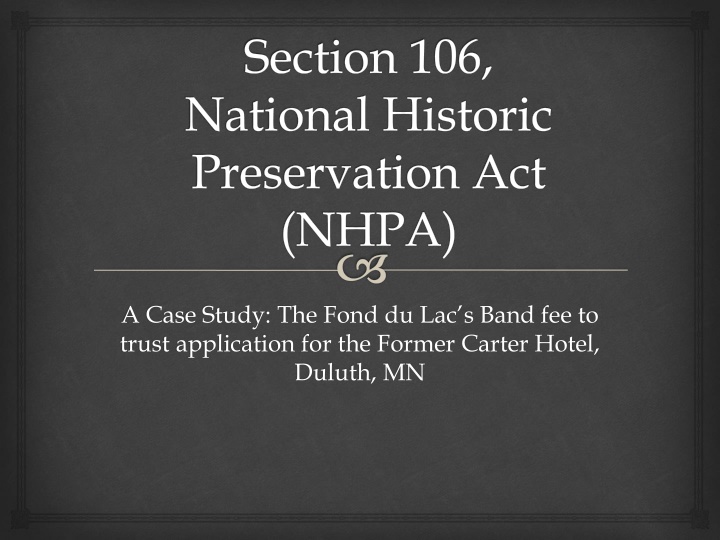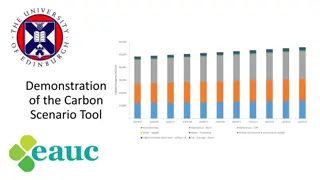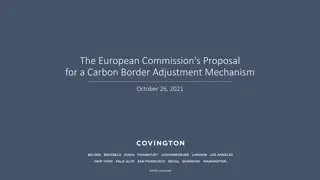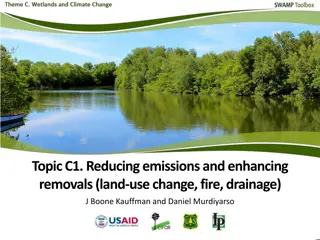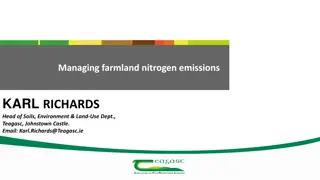Carbon Emissions and Resource Efficiency Strategies
In this comprehensive study by John Barrett, the link between carbon emissions and raw material use is explored, along with current policy pathways and resource efficiency strategies. The role of resource efficiency in by-products, saving strategies in production and consumption, and cross-sector linkages are analyzed. Concluding insights focus on incentivizing social change, optimizing carbon-intensive products, and maintaining a government-wide approach towards resource efficiency goals.
Download Presentation

Please find below an Image/Link to download the presentation.
The content on the website is provided AS IS for your information and personal use only. It may not be sold, licensed, or shared on other websites without obtaining consent from the author.If you encounter any issues during the download, it is possible that the publisher has removed the file from their server.
You are allowed to download the files provided on this website for personal or commercial use, subject to the condition that they are used lawfully. All files are the property of their respective owners.
The content on the website is provided AS IS for your information and personal use only. It may not be sold, licensed, or shared on other websites without obtaining consent from the author.
E N D
Presentation Transcript
Section 106, National Historic Preservation Act (NHPA) A Case Study: The Fond du Lac s Band fee to trust application for the Former Carter Hotel, Duluth, MN
Section 106 of the National Historic Preservation Act of 1966 (NHPA) requires Federal agencies to take into account the effects of their undertakings on historic properties.
36 CFR 800 Subpart B The section 106 Process continued Initiation of the Process Identification of historic properties Assessment of adverse effects Resolution of adverse effects Failure to resolve adverse effects Coordination with the National Environmental Policy Act (NEPA) - Vast majority of undertakings are resolved by this point
800.3 Initiation of the Process (a) Undertaking? Yes. (1) Potential to cause effects on historic properties? Yes. (b) Coordinate with other reviews? Yes, NEPA. (c) Identify the appropriate SHPO/THPO? Yes, MN SHPO and Fond du Lac THPO. (f) Identify other consulting parties? Yes, Fond du Lac Band, City of Duluth, and Duluth Preservation Commission.
800.4 Identification of historic properties. (a) Determine scope of identification efforts. In consultation with the SHPO/THPO, the agency official shall: (1) Determine and document the area of potential effects, as defined in 800.16(d). Yes, Duluth Historic District. (2) Review existing information on historic properties within the area of potential effects? Yes, architectural historians reports; NRHP nomination. (3) Seek Information as appropriate from consulting parties? Yes.
800.4 Identification of historic properties continued (b) Identify historic properties? Yes, Duluth Historic District and the former Carter Hotel a contributing building to the District. (c) Evaluate historic significance (1)Apply National Register criteria? Yes, District is already list on the National Register. (d) Results of identification and evaluation (2) Historic properties affected? Yes.
800.5 Assessment of adverse effects (a) Apply criteria of adverse effect. In consultation with the SHPO/THPO and any Indian tribe. (1) Criteria of adverse effect. An adverse effect is found when an undertaking may alter, directly or indirectly, any of the characteristics of a historic property that qualify the property for inclusion in the National Register in a manner that would diminish the integrity of the property's location, design, setting, materials, workmanship, feeling, or association. Consideration shall be given to all qualifying characteristics of a historic property, including those that may have been identified subsequent to the original evaluation of the property's eligibility for the National Register. Adverse effects may include reasonably foreseeable effects caused by the undertaking that may occur later in time, be farther removed in distance or be cumulative. (2) Examples of adverse effects. Adverse effects on historic properties include, but are not limited to: (i) Physical destruction of or damage to all or part of the property; (c) (2) Adverse effect. If an adverse effect is found, the agency official shall consult further to resolve the adverse effect pursuant to 800.6.
800.6 Resolution of adverse effects (a) Resolution of adverse effects. Continue consultation. The agency official shall consult with the SHPO/THPO and other consulting parties, including Indian tribes and Native Hawaiian organizations, to develop and evaluate alternatives or modifications to the undertaking that could avoid, minimize or mitigate adverse effects on historic properties (1) Notify the Council and determine Council participation. (b) Resolve adverse effects (c) Memorandum of agreement.
Government Performance Results Act (GPRA)/Strategic Goal: GPRA " enhance the quality of life, to promote economic opportunity, and to carry out the responsibility to protect and improve the trust assets of American Indians, Indian tribes, and Alaska Natives." Strategic Goal Protect Cultural and Natural resources when processing house leases ( enhance the quality of life), Casino development and timber sales ( promote economic opportunity), fee-to-trust applications ( to protect and improve the trust assets of American Indians, Indian tribes, and Alaska Natives ), etc.
